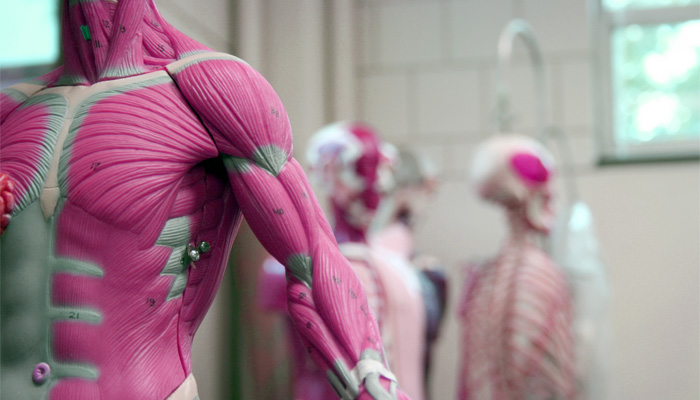10-11-2016
How Anatomical Models Can Improve Patient Adherence – And the Bottom Line

Dear House Rules,
I’m looking for a unique way to promote my brand. We’re already doing e-mails, eDetails, mobile disease state apps, and so on. Any ideas?
Signed,
Been there, done that
Dear Been There:
We hear that all the time. And if you think you’re jaded, imagine how doctors and other medical professionals feel! In this day and age of constant innovation, it is indeed tough to find new ways to stand out, but there’s a secret weapon you may not have thought of—and your clients see it every day. It’s the anatomical model, and it can improve patient compliance with treatment, which in turn means more profit for pharma manufacturers.
As a patient, you’ve almost certainly seen plastic hearts, spines, sinus cavities, or lungs (depending on what type of doctor), but as a marketer, have you considered the opportunity they afford? Depending on the product or disease state being treated, a hands-on model (or its even more modern cousin, the interactive mobile phone app) can be the cornerstone of an on-target brand marketing strategy. Here are a few examples of how:
- Osteoporosis — When the disease being treated has few or no discernible symptoms, it’s a real challenge to get patients to comply with their prescribed medication regime, especially if it’s long-term. A recent study was conducted among patient with osteoporosis. Because the disease doesn’t often have obvious symptoms, lots of patients don’t see the need for treatment. Investigators used 3-D models of healthy and osteoporotic bones as a tool to change patients’ perception of the disease and improve initiation of treatment with a bisphosphonate. Patients were randomized to receive either a standard medical interview or one that included the use of a 3-D bone model. Those whose medical consultations included the bone models were found to be more likely to start using oral bisphosphonates.
- HIV — For these patients, researchers used patients’ most recent blood test results to provide a moving pictorial representation of the patient’s relevant results and their viral load in a smartphone application. When any medication dose was missed, the protective barrier corresponding to that medication would break down and the virus would begin attacking the patient’s lymphocytes. This model gave the patient with a real-time picture of their level of immune protection against the HIV virus, and demonstrated the consequences of non-adherence with medication. When compared to control patients, patients who received the augmented application showed a significantly higher level of self-reported adherence to their antiretroviral medications at three months and decreased viral load.
The use of illness and treatment-related imagery can make a health condition more concrete, helping patients better understand the disease process and the importance of self-management behaviors, such as medication adherence.
This proven improvement in patient adherence to therapy is a feature you can offer to your clients by suggesting they use visual models as a part of their strategy. Emphasize the importance of partnering with an experienced creative agency to develop marketing tactics that support and enhance this strategy overall.

